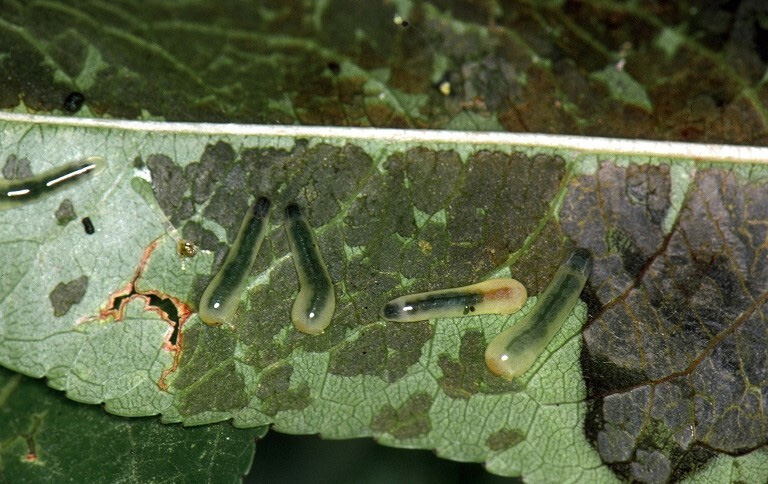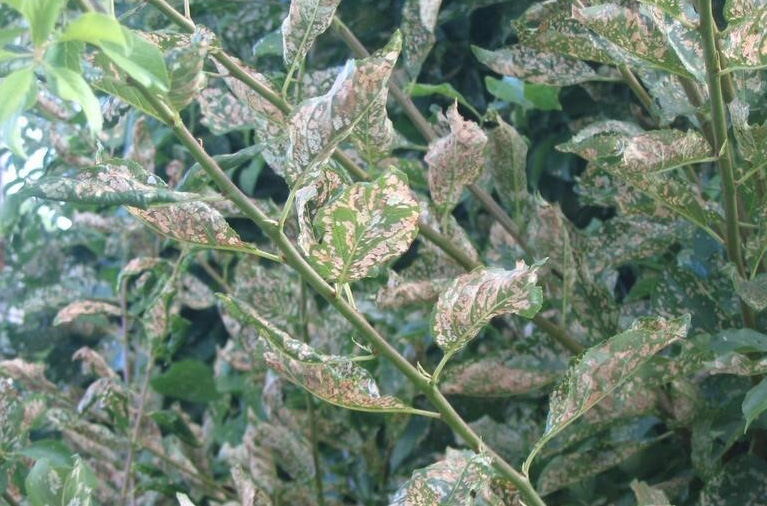Pear Sawfly (Pearslug) (Caliroa cerasi)

Figure 1. Pearslug larvae on leaf. Photo by J. Payne, Bugwood.org.
Hosts
Pear, cherry, plum, quince, apple, cotoneaster, and mountain-ash trees.
Damage and Symptoms
They are not actually true “slugs” but are closely related to a wasp. The damage is quite distinctive, showing a skeletonizing effect on the leaf surface. They can cause browning of the leaves, premature leaf drop, and reduced fruit size/production the following season.
Life Cycle
Adults emerge in late June to July. Females lay eggs on the upper surface of the leaves. The larvae feed on the upper leaf and drop to the soil to pupate. A second generation of adults emerge within a couple of weeks. The second generation can often be more damaging to the leaf tissue.
Management
Pearslugs can be washed off with vigorous jets of water. Wood ash or dirt thrown on the slugs will help to dry them out and kill them. There are several contact insecticides labeled for chemical control including horticultural oil, neem oil, or a product with the active ingredient spinosad (products such as Captain Jack’s, Monterey Garden Insect Spray), carbaryl (products such as Sevin), or malathion.

Figure 2. Pearslug damage on peach leaf.
Further Information
To learn more about the topics discussed on this page, contact the Schutter Diagnostic Lab. If you suspect an infestation on your property, contact your local extension agent, the Schutter Diagnostic Lab at Montana State University, or the Montana Department of Agriculture.
This fact sheet is also available as a printable PDF (388KB).
Disclaimer: These recommendations are provided only as a guide. It is always the pesticide applicator’s responsibility, by law, to read and follow all current label directions for the specific pesticide being used. The authors and Montana State University assume no liability resulting from the use of these recommendations. The Montana State University Extension Service is an ADA/ EO/AA/Veteran’s Preference Employer and Provider of Educational Outreach.
